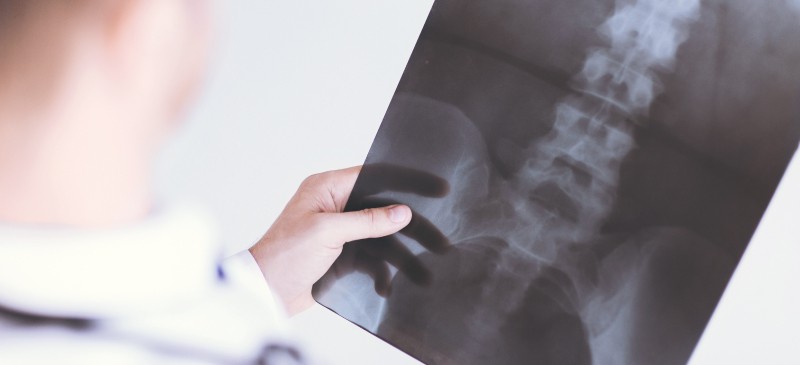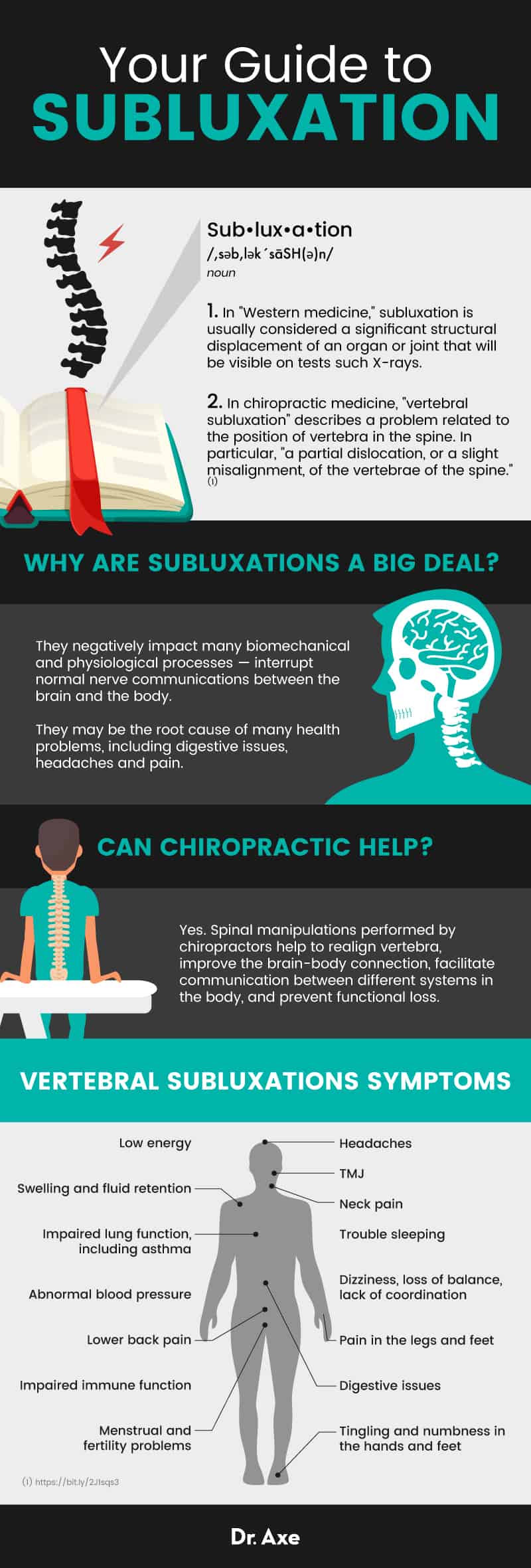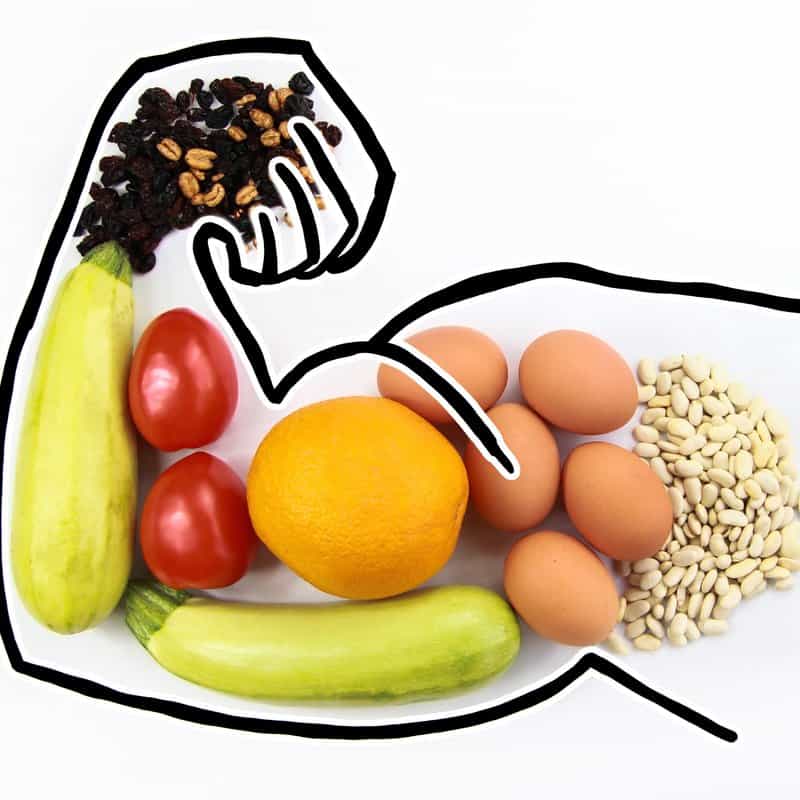This Dr. Axe content is medically reviewed or fact checked to ensure factually accurate information.
With strict editorial sourcing guidelines, we only link to academic research institutions, reputable media sites and, when research is available, medically peer-reviewed studies. Note that the numbers in parentheses (1, 2, etc.) are clickable links to these studies.
The information in our articles is NOT intended to replace a one-on-one relationship with a qualified health care professional and is not intended as medical advice.
This article is based on scientific evidence, written by experts and fact checked by our trained editorial staff. Note that the numbers in parentheses (1, 2, etc.) are clickable links to medically peer-reviewed studies.
Our team includes licensed nutritionists and dietitians, certified health education specialists, as well as certified strength and conditioning specialists, personal trainers and corrective exercise specialists. Our team aims to be not only thorough with its research, but also objective and unbiased.
The information in our articles is NOT intended to replace a one-on-one relationship with a qualified health care professional and is not intended as medical advice.
Subluxation Symptoms + 5 Natural Remedies
May 27, 2018

When chiropractors use the phrase “vertebral subluxation,” they are usually referring to mechanical compression and irritation to spinal joints and nerves. Misalignments in your spine (subluxation), especially those located near the top of your spine at your neck, can keep your brain stem from being fully protected and affect the function of every organ in your entire body.
Subluxations are thought to be your body’s response to stress. (1) The biggest concern when it comes to vertebral subluxations is that they interfere with normal functioning of the nervous system. Because the brain sends messages via the spinal cord that control just about every bodily system — impacting heart, lung and digestive functions — when a subluxation develops in the spine, it can cause widespread symptoms.
What are some of the reasons that subluxations develop? Common causes include poor posture, eating an inflammatory diet, injuries, degenerative diseases, stress, repetitive movements, and a sedentary lifestyle.
Below you’ll learn how chiropractic care and other manual therapies, dietary intervention, appropriate exercise, supplements and mind-body practices can all help prevent or treat vertebral subluxations that impair your overall health.
What Is Subluxation?
Depending on who you ask, subluxation can have several different meanings. In “Western medicine,” subluxation is usually considered a significant structural displacement of an organ or joint that will be visible on tests such X-rays. The medical definition of subluxation is “a partial abnormal separation of the articular surface of a joint.” (2)
On the other hand, chiropractors usually refer to “vertebral subluxation,” which describes a problem related to the position of vertebra in the spine. Subluxation is defined in chiropractic as “a partial dislocation, or a slight misalignment, of the vertebrae of the spine.” (3) You can think of vertebral subluxation as the small spinal bones being improperly positioned or experiencing abnormal motion.
According to chiropractic theory, subluxation is the root cause of many health problems, including digestive issues, headaches and pain. This is because subluxations negatively impact many biomechanical and physiological processes. Vertebral subluxation are thought to interrupt normal nerve communications between the brain and the body. Spinal manipulations are therefore performed by chiropractors to help realign vertebra, improve the brain-body connection, facilitate communication between different systems in the body, and prevent functional loss.
Symptoms
Can you tell if you have subluxations? They may cause pain, but it’s not always possible to feel subluxations or to even know that you might have one (or many). If a subluxation shifts out of alignment and puts pressure on certain nerves, then pain will likely be felt. Various parts of the body can be impacted by spinal misalignment, including the neck, back, limbs, vital organs, butt and reproductive system.
Some conditions and symptoms that can be associated with vertebral subluxations include: (4)
- Neck pain
- Impaired lung function, including asthma
- Lower back pain
- Abnormal blood pressure
- Impaired immune function
- Low energy
- TMJ
- Trouble sleeping
- Headaches
- Pain in the legs and feet, including sciatic nerve pain
- Digestive issues
- Dizziness, loss of balance, lack of coordination
- Tingling and numbness in the hands and feet.
- Swelling and fluid retention
- Menstrual and fertility problems
Causes
The curve of your cervical spine, sometimes called the”arc of life,” should be very close to 45 degrees. Any loss of your normal curve is considered a severe neurological problem because it will pull down on the base of your brain, stretch your spinal cord and compress your nerves.
Subluxations form when the space around nerve roots in the spinal canal is decreased or irritated/inflamed. Subluxations can cause inflammation of the joints and nerve roots as well as lack of motion which can worsen swelling, stiffness and joint degeneration. They also cause muscles near the spine to tighten, which limits range of motion.
The spinal cord is the cord that runs within the bones in the back and contains thread-like nerves. The spinal cord travels down from the brain through the spinal canal. Nerve roots branch off the spinal cord and extend elsewhere in the body, passing through openings. When nerve roots become pinched or irritated, then this is considered a subluxation.
Chiropractors believe that there are a number of physiological causes of vertebral subluxations. Some examples of subluxation causes include:
- Hyperemia — excess of blood in a specific area of the body or obstruction that prevents proper blood flow.
- Congestion — when muscles develop painful trigger points due to buildup of toxins around certain nerves.
- Edema — fluid retention and swelling due to damage to capillaries (tiny blood vessels) that causes fluid to leak out.
- Minute hemorrhages — small amount of bleeding or abnormal flow of blood.
- Fibrosis — when scar tissue replaces healthy tissue.
- Local ischemia — lack of blood flow in the muscles that leads to pain and spasms.
- Atrophy — when supportive muscles shrink or waste away.
- Tissue rigidity — when adhesions form in the joints, ligaments, tendons and muscles.
What are the risk factors for developing subluxations? Common contributing factors include: (5)
- Accidents, such as car accidents
- Injuries due to impact, physical force, slips or falls
- Degenerative joint and bone diseases, such as arthritis or osteoporosis which can cause changes to the spine or intervertebral discs
- Joint swelling caused by damage done to the intervertebral joint
- An inflammatory response caused by a poor diet, lack of pure water or psychological stress
- Other types of physical stressors, such as having poor posture and bad form when exercising
- Normal “wear and tear” associated with aging
- Repetitive movements, such as those performed during work, hobbies, sports or exercise
- Bulging or herniated discs
- Pregnancy and giving birth.
- Even complications during the birthing process that lead to mild deformities.
Subluxation vs. Dislocation
- Dislocation and subluxation refer to displacement of bones that form a joint. Dislocation is considered complete disruption of a joint, while subluxation is a partial dislocation. (6)
- Dislocation occurs when a joint is forced out of its natural alignment from excessive stretching and/or tearing of the joint ligaments and capsule.
- Both dislocation and subluxation can damage ligaments, nerves and joint surfaces (cartilage), which contributes to pain, stiffness, decreased flexibility and loss of functionality. Both may happen in response to an injury, impact or accident. (7)
- Dislocations are most likely to impact parts of the body including the shoulders, elbows, fingers and kneecaps. Pain, swelling and deformity are symptoms that are usually present when a joint is dislocated.
- To prevent dislocations and subluxation, it’s important to strengthen muscles surrounding susceptible joints. This takes pressure off of joints and helps prevent muscular compensations that can increase stress placed on certain parts of the body.
- How is a dislocated joint treated? It must first be stabilized to prevent further injury. Rest is needed to help the joint heal. Ice and elevation can both reduce swelling and pain, but compression might actually make pain worse. After an initial trauma or injury, exercises to improve range of motion and strength can be incorporated under the care of a medical professional.

Natural Remedies for Subluxation
1. Chiropractic Care
Rather than just treating specific symptoms, such as headaches or digestive issues, addressing the underlying cause of a patient’s symptoms (including subluxations) is the foundation of chiropractic care. Chiropractors are trained to identify and correct subluxations. They offer vertebral subluxation treatment by performing chiropractic adjustments, in which they apply targeted force to a specific area of the spine, to restore normal alignment. Mobilization, massage, heat/cold therapy or rehabilitative exercises are also used to relieve pressure placed on the spine.
Many studies have found that in the treatment of various symptoms, hands-on chiropractic adjustments are helpful for postural restoration, spinal alignment, nervous system function and overall maintenance of health.
What types of symptoms can chiropractic help treat? Among others, neuro-musculoskeletal conditions such as neck or low back pain are sone of the most common reasons that adults visit chiropractors every year.
Chiropractic care rests on the theory that the body has an innate ability to heal itself once interferences are removed. Not only can chiropractic adjustments for subluxations be beneficial, but your chiropractor can also help you address underlying causes of subluxations — such as a low-quality diet, chronic stress and poor posture.
Chiropractors spend years in training, thoroughly learning about subjects like anatomy, physiology, nutrition and holistic health. Many have specialized training in nutrition, supplementation and various types of mind-body exercises that are useful for preventing subluxations from returning.
2. Other Manual Therapies
Poor posture and an unhealthy, sedentary lifestyle can cause straining all over, especially in the neck, a condition called forward head posture. If you’re hunched over all day, sitting down, not stretching standing much and leaning your head forward just several inches continuously, this puts a ton of pressure on your spine.
Aside from chiropractic adjustments, other “hands on” (manual) therapy approaches that can help resolve postural problems and subluxations include rolfing, Active Release Technique (ART), integrative manual therapy, massage therapy and myofascial release technique.
Like chiropractic, these approaches can help resolve physical problems that negatively impact the nervous system, such as poor posture or form, physical and emotional stress, and muscular tension and tightness. They may also be able to stimulate a parasympathetic response (aka a relaxation response) that reduces stress and allows certain organs to function better. Increased parasympathetic activity is beneficial for blood pressure, sleep, digestion, mental focus and more.
3. Dietary Changes
Improving your diet is important for preventing subluxations because a healthy diet helps reduce system inflammation, the root cause of many different diseases. Here’s what eating an anti-inflammatory diet looks like:
- Eat plenty of fruits and vegetables, which are naturally high in antioxidants, fiber and other nutrients.
- Stay hydrated to prevent muscle spasms, manage blood pressure and improve digestion. Drink eight glasses of water daily as dehydration can increase back pain.
- Eat more potassium-rich foods. Potassium and magnesium help reduce swelling and is an important electrolyte for muscular and nerve functions. Include potassium and magnesium-rich foods in as many of your meals as possible, such as green leafy vegetables, avocados, bananas, coconut water, cocoa and cultured dairy.
- Get more omega-3 fats. Good sources include wild-caught fish and flaxseed. Omega-3 fatty acids can help reduce inflammation and manage pain.
- Eat more clean, lean protein foods. Choose pasture-raised chicken and turkey or grass-fed lean meats to provide your body with adequate protein needed to maintain muscle and bone health. Other good protein sources include cage-free eggs, fish, bone broth or other unprocessed protein powders, beans and legumes.
- Incorporate healthy fats. Good choices include coconut oil, olive oil, avocado, nuts, seeds, grass-fed butter, and ghee.
- Have probiotic foods. These are helpful for gut health and immune system regulation. Examples include fermented dairy products like yogurt or kefir, kombucha and cultured veggies.
- Reduce or eliminate the following processed ingredients/foods: added sugar, sweetened beverages or snacks, refined vegetable oils, refined grain products, too much alcohol and caffeine, and tobacco products.
I also recommend taking the following supplements to reduce inflammation and help with nutrient absorption:
- Fish oil (1,000 to 2,000 milligrams daily)
- Turmeric (1,000 milligrams daily)
- Proteolytic enzymes (bromelain and papain, 500 milligrams three times daily)
- MSM (2,000–8,000 milligrams daily)
- Magnesium (400–500 milligrams daily)
- Essential oils, including peppermint and wintergreen oil
4. Appropriate Exercise
Exercising regularly — ideally a combination of both cardio/aerobic exercises and strength training — can help decrease inflammation, improve flexibility, helping you maintain a healthy weight, build strength, improve posture and reduce muscular compensations/weakness. Here are tips for getting the most benefits from exercise:
- Gradually start any new program, and get clearance from your doctor if needed
- Work your way up to 30–60 minutes of exercise daily
- Warm up and stretch before beginning a workout
- Learn proper posture or form (especially when lifting heavy objects, squatting or climbing)
- Wear supportive sneakers, possibly with insoles if needed
- For general health, avoid sitting too much during the day or periods of prolonged inactivity
- Make sure to give yourself enough rest between tougher workouts to recover properly
5. Mind-Body Treatments
Mind-body practices can help to promote relaxation and reduce the physical and mental effects of stress, especially increased inflammation. They do this by balancing activity of the sympathetic and parasympathetic nervous systems. If you suspect that stress is contributing to your symptoms and taking a toll on your physical health, consider visiting a massage therapist, attending a meditation class or trying acupuncture.
Other stress-relieving activities include: using relaxing essential oils in a bath, exercise or walks outdoors, breathing exercises, prayer, reading and journaling.
Precautions
If you do visit a chiropractor for treatment, know that it’s possible to experience some potential adverse effects following adjustments. The risks are low, but some temporary side effects like soreness, stiffness or tenderness following adjustments is possible within about 24 hours.
Head to your doctor or a chiropractor if you experience pain and other symptoms that do not get better within several weeks. If pain starts suddenly, look out for other symptoms that may point to a more serious condition, such as a fever, chills, dizziness, numbness or unexplained weight loss.
Always visit a doctor or the emergency room following trauma to the spine, head or neck. Mention to your doctor any possible causes of spinal problems you may have experienced in the past, such as autoimmune diseases, infections, a history of kidney problems or cancer.
Final Thoughts
- The medical definition of subluxation is “a partial abnormal separation of the articular surface of a joint.” A vertebral subluxation is defined in chiropractic as “a partial dislocation, or a slight misalignment, of the vertebrae of the spine.”
- Vertebral subluxations can compress nerves, cause muscles to tighten, and interfere with nervous system functions that affect the whole body. Some common subluxation causes are: injury, stress, degenerative disease, inflammation and poor posture.
- Subluxation symptoms can include: neck or back pain, digestive issues, low energy, impaired lung function, headaches, instability and more.
- Subluxation treatment options include: chiropractic care, other manual therapies, dietary intervention, appropriate exercise, supplements and mind-body practices.







